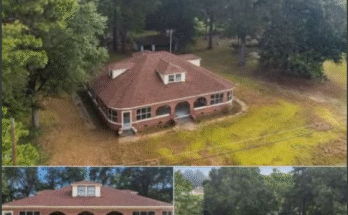Frustration Mounts in AOC’s District as Crime Rates Surge and Constituents Demand Action
.
For months now, a quiet unease has been spreading through parts of New York’s 14th Congressional District — the area represented by Rep. Alexandria Ocasio-Cortez (AOC). Once celebrated as one of the most vibrant, diverse regions in the city, the district — which includes parts of the Bronx and Queens — is now making headlines for a far more troubling reason: a surge in crime that’s left residents anxious, angry, and demanding urgent solutions.
From petty theft to violent assaults, neighbors say they no longer feel as safe as they once did walking to work, sending their kids to school, or even stopping at the corner store. And many are starting to ask hard questions — not just about policing, but about leadership.
A Community on Edge
On a recent Thursday evening, a group of local residents gathered outside a small community center in Jackson Heights. The mood was tense, even before the meeting began. People spoke in low, frustrated tones about car break-ins, stolen packages, and muggings that had become almost routine.
“It’s not just numbers — it’s how it feels,” said Maria Torres, a lifelong Bronx resident and mother of three. “You can tell people are scared again. We used to sit outside at night in the summer. Now, when the sun goes down, everyone goes inside.”
The latest NYPD data supports what locals are feeling. Reports of robberies, assaults, and burglaries have climbed significantly across several precincts overlapping AOC’s district. While exact percentages vary depending on the neighborhood, the trend is clear: crime is up, and confidence in public safety is down.
In one precinct in the Bronx, robberies have risen by more than 25% compared to the same time last year. Meanwhile, assaults are up nearly 30% in some areas of Queens. Even minor crimes like shoplifting and vandalism have surged, leaving small business owners frustrated and fearful of what’s next.
Residents Speak Out
At the community meeting, dozens of voices echoed the same message — something needs to change.
“I’m not saying we want to go back to the days of over-policing,” said Luis Delgado, a local restaurant owner. “But right now, it feels like there’s no policing. We call for help, and it takes an hour for someone to show up. By then, the person who robbed us is long gone.”
Others expressed frustration with what they see as political inaction. “I voted for AOC because she promised to fight for working people,” said one woman, who asked not to be named. “But we can’t work, we can’t live, we can’t breathe if we’re scared to walk outside.”
Some pointed out that the district’s problems are complex — not just about crime, but also about poverty, housing instability, and a growing mental health crisis that’s playing out in public spaces. “It’s all connected,” said community advocate Jasmine Ortiz. “When people don’t have access to resources, when addiction goes untreated, when the city keeps cutting essential programs, what do we think will happen?”
AOC’s Balancing Act
For her part, Rep. Ocasio-Cortez has long walked a careful line between progressive reform and practical governance. Known for her vocal advocacy of criminal justice reform, she’s been an outspoken critic of mass incarceration and aggressive policing tactics. But as the crime issue intensifies in her own district, pressure is mounting for her to take a firmer stance on public safety.
In recent months, AOC has emphasized addressing root causes of crime rather than relying solely on law enforcement solutions. “Safety isn’t just about police,” she said at a recent town hall. “It’s about stable housing, education, mental health care, and good jobs. We can’t arrest our way out of poverty.”
That message resonates with many of her supporters, especially younger and more progressive voters. But for others, it’s starting to wear thin. “I agree with her on long-term solutions,” said Bronx resident Henry Vasquez, “but we need help now. I can’t tell my daughter not to be scared on the subway just because we have a ten-year plan to fix things.”
Businesses Hit Hard
Local business owners are among those feeling the strain most acutely.
In Astoria, café owner Nisha Patel said her shop has been broken into twice this year. “The first time, they smashed the window and took our cash drawer,” she recalled. “The second time, they came in through the back. It’s not even about the money anymore — it’s the feeling that we’re not protected.”
She said she’s noticed fewer customers coming in during evening hours. “People tell me they don’t want to walk here after dark,” Patel said. “We’re losing business, and it’s breaking my heart.”
Community leaders have urged city officials to deploy more patrols and increase coordination with local precincts, but residents say the response has been slow and inconsistent.
Political Tensions Rising
The situation is beginning to carry political consequences. Critics of AOC — particularly conservatives and moderate Democrats — have seized on the issue as evidence that progressive policies are failing. “She talks about compassion,” one Queens community organizer said, “but where’s the compassion for the victims of these crimes?”
Even some of her longtime allies are starting to voice concern privately, noting that perceptions of safety can shape elections as much as the statistics themselves. In working-class districts like hers, where families are already struggling with inflation, housing costs, and job insecurity, rising crime feels like the last straw.
“She’s in a tough spot,” said political analyst Samira Levy. “Her brand is built on reimagining the system — not reinforcing it. But when your constituents are scared, they don’t want theory. They want results.”
Searching for Solutions
In response to the growing frustration, several community groups have launched their own safety initiatives. In the Bronx, volunteers have started neighborhood watch programs. In Queens, residents have organized self-defense workshops and youth outreach events aimed at steering teens away from street crime.
These efforts have had some success in building solidarity, but residents say it’s not enough. They want to see stronger collaboration between city leaders, law enforcement, and elected officials like AOC to create immediate, tangible change.
Some have proposed hybrid solutions — increasing police visibility while expanding access to social services. “We can have both accountability and compassion,” said Ortiz, the community advocate. “We just need leaders who are willing to listen to everyone, not just their political base.”
A Defining Moment
As the next election season looms, AOC faces one of the toughest tests of her political career. Her national profile remains strong, but local frustration is growing louder by the week. Whether she can balance her progressive principles with the immediate needs of her constituents could define not only her future, but the broader debate about how New York — and cities like it — tackle the intertwined crises of crime, inequality, and trust.
For now, the mood in her district remains uneasy. Parents hurry their children home before dark. Shopkeepers install extra cameras and metal gates. Neighbors swap stories about incidents that once felt unthinkable.
And through it all, one message echoes from every corner of the community — from the Bronx streets to the bustling blocks of Queens: We want to feel safe again.
Whether that plea leads to new policies, political shifts, or simply deeper conversations about what safety truly means, one thing is clear — the people of AOC’s district are no longer willing to stay silent. Their frustration is real, their fears are growing, and their call for action may soon become impossible to ignore.


